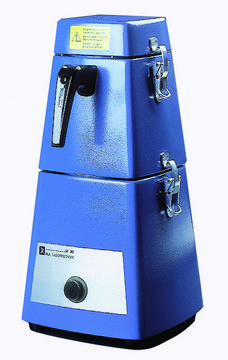All Photos(1)
About This Item
Empirical Formula (Hill Notation):
Sn
CAS Number:
Molecular Weight:
118.71
EC Number:
MDL number:
UNSPSC Code:
12352300
PubChem Substance ID:
Recommended Products
form
foil
resistivity
11 μΩ-cm, 20°C
bp
2270 °C (lit.)
mp
231.9 °C (lit.)
density
7.310 g/mL at 25 °C (lit.)
SMILES string
[Sn]
InChI
1S/Sn
InChI key
ATJFFYVFTNAWJD-UHFFFAOYSA-N
Application
With HCl, reduces a variety of functional groups; stereoselective allylation of carbonyl compounds; in situ generation of tin enolates for directed aldol reactions
used as reducing reagent with HCl, reduces a variety of functional groups; stereoselective allylation of carbonyl compounds.
Packaging
Roll with ca. 250 g
Storage Class Code
13 - Non Combustible Solids
WGK
WGK 3
Flash Point(F)
Not applicable
Flash Point(C)
Not applicable
Personal Protective Equipment
dust mask type N95 (US), Eyeshields, Gloves
Regulatory Information
新产品
Choose from one of the most recent versions:
Already Own This Product?
Find documentation for the products that you have recently purchased in the Document Library.
Huahua Jian et al.
The Journal of organic chemistry, 68(13), 5091-5103 (2003-06-21)
Four caltrop-shaped molecules that might be useful as surface-bound electric field-driven molecular motors have been synthesized. The caltrops are comprised of a pair of electron donor-acceptor arms and a tripod base. The molecular arms are based on a carbazole or
D B Shpakovsky et al.
Dalton transactions (Cambridge, England : 2003), 41(48), 14568-14582 (2012-10-12)
Four new organotin(IV) complexes of bis-(2,6-di-tert-butylphenol)tin(IV) dichloride [(tert-Bu-)(2)(HO-Ph)](2)SnCl(2) (1) with the heterocyclic thioamides 2-mercapto-pyrimidine (PMTH), 2-mercapto-4-methyl-pyrimidine (MPMTH), 2-mercapto-pyridine (PYTH) and 2-mercapto-benzothiazole (MBZTH), of formulae {[(tert-Bu-)(2)(HO-Ph)](2)Sn(PMT)(2)} (2), {[(tert-Bu-)(2)(HO-Ph)](2)Sn(MPMT)(2)} (3), {[(tert-Bu-)(2)(HO-Ph)](2)SnCl(PYT)} (4) and {[(tert-Bu-)(2)(HO-Ph)](2)SnCl(MBZT)} (5), have been synthesized and characterized by elemental
Rutile-type (Ti,Sn)O₂ nanorods as efficient anode materials toward its lithium storage capabilities.
Yu-Chun Chen et al.
Nanoscale, 5(6), 2254-2258 (2013-02-13)
A series of rutile-type (Ti,Sn)O2 solid solutions with nanorod architecture were successfully synthesized in this study by varying their calcination temperatures of tin-modified titanium dioxide (Sn/TiO2) nanocomposites under a nitrogen atmosphere. During the delithiation process, the (Ti,Sn)O2 nanorods obtained at
P Olmedo et al.
Environment international, 59, 63-72 (2013-06-25)
Although fish intake has potential health benefits, the presence of metal contamination in seafood has raised public health concerns. In this study, levels of mercury, cadmium, lead, tin and arsenic have been determined in fresh, canned and frozen fish and
A Gassenq et al.
Optics express, 20(25), 27297-27303 (2012-12-25)
A surface-illuminated photoconductive detector based on Ge0.91Sn0.09 quantum wells with Ge barriers grown on a silicon substrate is demonstrated. Photodetection up to 2.2µm is achieved with a responsivity of 0.1 A/W for 5V bias. The spectral absorption characteristics are analyzed
Our team of scientists has experience in all areas of research including Life Science, Material Science, Chemical Synthesis, Chromatography, Analytical and many others.
Contact Technical Service

